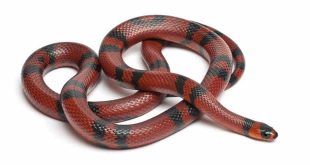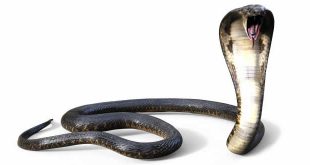 Water Moccasin — Agkistrodon piscivorus(water moccasin) is a venomous pit viper species found in the eastern United States. It is a close relative of the copperhead, A. contortrix. Three subspecies are currently recognized, including the nominate subspecies described here.
Water Moccasin — Agkistrodon piscivorus(water moccasin) is a venomous pit viper species found in the eastern United States. It is a close relative of the copperhead, A. contortrix. Three subspecies are currently recognized, including the nominate subspecies described here.
This is the largest species of the genus Agkistrodon. Adults commonly exceed 80 cm (roughly 2 ft. 8 in.) in length, with males growing larger than females. They have a heavy body with a moderately long tail. Occasionally, individuals may exceed 180 cm (5.9 ft) in length, especially in the eastern part of the range.
The color pattern consists of a brown, gray, tan, yellowish olive or blackish ground color, which is overlaid with a series of 10-17 cross bands that are dark brown to almost black. These cross bands, which usually have black edges, are sometimes broken along the dorsal midline to form a series of staggered half bands on either side of the body. These cross bands are visibly lighter in the center, almost matching the ground color, often contain irregular dark markings, and extend well down onto the ventrals. The dorsal banding pattern fades with ages, so that older individuals are an almost uniform olive brown, grayish brown or black. The belly is white, yellowish white or tan, marked with dark spots, and becomes darker posteriorly. The amount of dark pigment on the belly varies from virtually nothing to almost completely black. The head is a more or less uniform brown color, especially in A. p. piscivorus. Sub adult specimens may exhibit the same kind of dark, parietal spots that are characteristic of A. contortrix, but sometimes these are still visible in adults. Eastern populations have broad dark post ocular stripe, bordered with pale pigment above and below, that is faint or absent in western populations. The underside of the head is generally whitish, cream or tan.
Juvenile and sub adult specimens generally have a more contrasting color pattern, with dark cross bands on a lighter ground color. The ground color is then tan, brown or reddish brown. The tip of the tail is usually yellowish, becoming greenish yellow or greenish in sub adults, and then black in adults. On some juveniles, the banding pattern can also be seen on the tail.
 Kids Portal For Parents India Kids Network
Kids Portal For Parents India Kids Network


